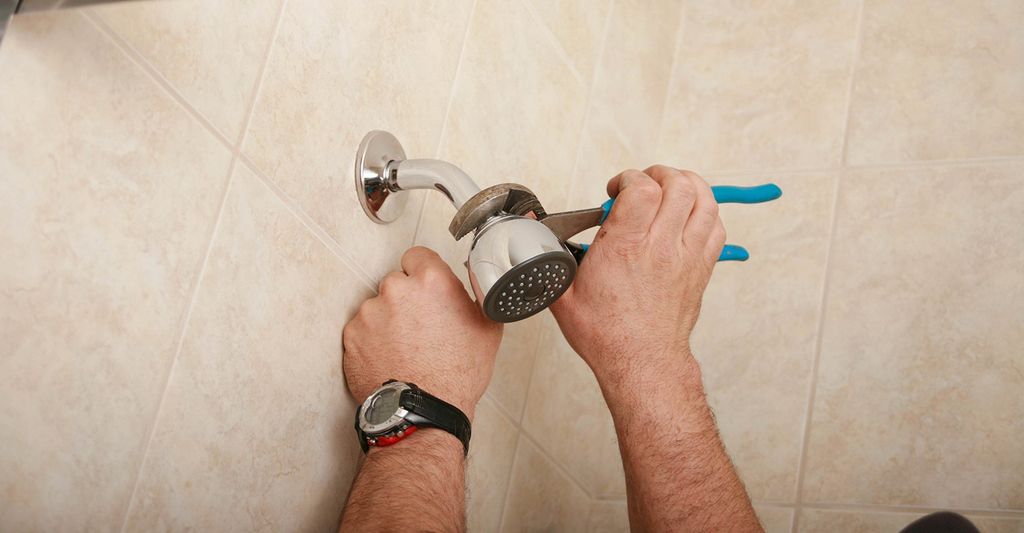How do I choose the best professional to install my tub? What qualifications should they have?
Here are some guidelines to help you choose a great professional for your tub installation or replacement project:
Make sure the professional has all of the appropriate licenses. If electrical lines need to be installed for a whirlpool pump, the professional should either be licensed as an electrician or capable of subcontracting this part of the job to a licensed electrician.
Make sure your professional carries liability insurance so that you’re protected against damage during the installation process.
Check their experience to ensure they have the skills needed for your job, including not only plumbing but also tile work, wall modifications or other details that your bathroom may need.
Read references and reviews to see what other customers are saying about the professional, and make sure they’re generally positive.
Get multiple estimates so you can compare them against each other. Good professionals typically offer detailed estimates, including the cost of parts, materials and labor. Be wary of any estimates that seem too high or too low compared to others.
How much does it cost to replace a bathtub?
The national average cost to install a new bathtub is approximately $1,250, according to Thumbtack data. However, average prices can range from around $550 to$3,000, depending on many factors.
For example, bathtub replacement costs largely depend on the type of tub you want to install and the labor involved in updating or repairing existing plumbing. Also, the job may require an extra day’s worth of labor (plus extra material costs for piping and fittings) if the plumber needs to move drains and water supplies.
Data on file at Thumbtack. For a personalized cost estimate, request a quote from a professional.
What goes into replacing a bathtub, and how long does it take?
There are several steps that a professional will typically take to replace a bathtub:
First, they’ll remove the old tub and its surround. If the new tub is a different size from the original, the professional may need to adjust the space, such as moving partition walls.
Your professional will make any necessary repairs or adjustments to water supplies and drain lines to fit the new tub.
If you’re installing a whirlpool tub, then at this point, the professional will run electrical lines to power the pump.
Last comes the tub installation itself, which normally involves positioning the new tub, installing the new tub surround, hooking up the faucet, plumbing and drain lines, and caulking around the tub’s edges to prevent leaks.
The amount of time it takes to replace a tub depends entirely on the job’s complexity. Here’s a breakdown:
Basic bathtub replacements typically take one to two days. This usually involves swapping an old tub and surrounding it with new fixtures of the same size. Additional, minimal plumbing updates and repairs may also be needed.
Complex bathtub replacements that require a professional to move partition walls or make significant updates to the plumbing may take between three to four days.
You can expect one week or more for extra complex installations, such as tiled tub surrounds or upgrading from a basic tub to a whirlpool tub, which will require electrical work and often lots of additional plumbing.
Remember: The timeline for your project will vary depending on many factors. Always ask your pro to provide an estimate.
Can I install a bathtub myself, or should I hire a professional?
Bathtub installation is best left to the pros, and here’s why:
Improperly installed tubs and plumbing are prone to leaks, which often leads to extensive (and costly) water damage repairs. Professionals are relied upon to do the job right and typically back it up with a guarantee against faulty workmanship.
Proper tub installation requires a broad skill set. Tub installation experts often need not just plumbing know-how but also the ability to run electrical lines, repair or install drywall or do masonry work if you need to repair or install a tiled tub surround.
Licensing may be necessary, depending on where you live. A professional should have the licenses that your area requires.
They can help with pulling permits and adhering to building codes. They’ll be more familiar with what it takes to adhere to your area’s building codes and can guide you through your local permitting process, if necessary.
What are the signs I need to install a new bathtub?
If you’re unsure about when to replace your bathtub, the following three signs are good indicators that replacement is due:
Cracks: Cracks — even tiny hairline fractures — mean that the bathtub may be leaking and likely should be replaced to avoid new or additional water damage.
Mold and mildew growth: Check basement areas beneath the tub or adjoining walls. If mold or mildew is present, this means the tub is likely seeping moisture. It could be a plumbing issue, or it could mean that the tub itself has a leak.
Stains: Fiberglass bathtubs have a protective coating designed to prevent staining. When you have stains that are difficult to remove, it often means the protective coating has worn away — which means it’s likely time to replace the tub.
What are the benefits of installing a new bathtub? For example, will it increase my home’s value?
If you only have a shower in your primary bathroom and you’re planning to sell your home, you might want to also install a bathtub to make your home more valuable to prospective buyers. A National Association of Realtors survey found that “first-time homebuyers say they want a shower-tub combo, ranking it highest among 18 bathroom features.”
Replacing an existing bathtub with a new one may also be beneficial. For example, new bathtubs have fresh, protective coatings, which make them much easier to clean and maintain than old, worn tubs. Also, you’ll enjoy a great new look and feel — plus extra comfort if you choose an ergonomically designed tub.
